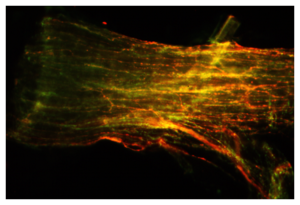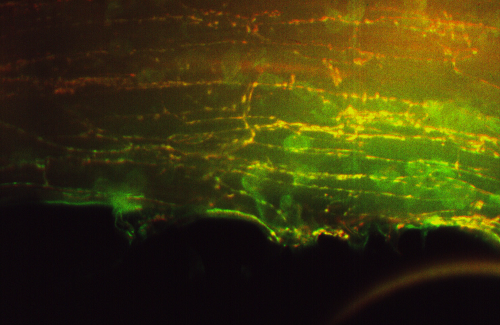rabbit, polyclonal
| Cat. No. | Amount | Price (EUR) | Buy / Note |
|---|---|---|---|
| ABD-058 | 20 μl | 196,60 | Add to Basket/Quote Add to Notepad |


For general laboratory use.
Shipping: shipped on gel packs
Storage Conditions: store at -20 °C
avoid freeze/thaw cycles
Shelf Life: 12 months
Form: liquid (Supplied as serum, preserved in glycerol)
Applications:
Anti-Head-Peptide can be used for ELISA and Immunocytochemistry.
Description:
The anti-head peptide recognizes the Periplaneta-head peptide (ANRSLRLRF-NH2-GA-PL),GA: Glutardialdehyd, PL: Polylysin.
The Periplaneta-head peptide was isolated and sequenced from the midgut of the American cockroach by Veenstra and Lambrou in 1995. The "head peptides" form a distinct family among the so-called FMRFamide-related peptides (FaRPs) of insects, along with myosuppressins, sulfakinins, and more broadly, FMRFamides. (Veenstra and Lambrou, 1995, Predel et.al 2004). It is known that antisera against FMRFamides often require only the last two amino acids (RFamides) for their recognition, thus also recognizing neuropeptides of other FaRP families. This general rule does not seem to apply to the head peptides, because only very low cross-reactivity to the FMRFamides was detected in the immunoassay (Matsumoto et al. 1989). Thus, the antibodies against leucomyosuppressin and perisulfakinin used by us at APO remained without immunoreactivity. The FMRFamide antibody used so effectively on the lateral cardiac nerve of the Ameican cockroach (Ude and Agricola, 1995) also remained without effect on APO.
Specificity:
Antisera to FMRFamide often only need the last two amino acids (RFamide) for recognition. In insects the FMRFamide-related peptides (FaRPs) are grouped into different families, which are expressed from different precursor genes: the FMRFamides), the myosuppressins, the sulfakinins and the head peptides. A crossreactivity of the anti-head peptide serum to the other FaRPs is visible, but the pattern of the head peptide immunoreactivity from brain, ventral nerve cord, midgut and antenna-heart (Fig 1, 2) is different to tested RF-amide sera (FMRFamide, anti-Perisulfakinin).
BIOZ Product Citations:
Selected References:
Predel et al. (2004) Unique accumulation of neuropeptides in an insect: FMRFamide-related peptides in the cockroach, Periplaneta americana. Eur J Neurosci. 20:1499.
Veenstra et al. (1995) Isolation of a novel RFamide peptide from the midgut of the American cockroach, Periplaneta americana Biochem Biophys Res Commun. 15,213:519.
Veenstra et al. (1995) Immunohistological localization of regulatory peptides in the midgut of the female mosquito Aedes aegypti Histochem Cell Biol. 104:337.